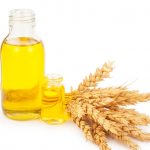
Sunflower oil, extracted from the seeds of the sunflower plant (Helianthus annuus), is a widely used vegetable oil with applications spanning from culinary to industrial uses. Known for its light taste, high smoke point, and nutritional benefits, sunflower oil is a staple in kitchens around the world. Additionally, its composition of essential fatty acids and vitamin E makes it a popular ingredient in the cosmetics and pharmaceutical industries. This essay delves into the composition, properties, production process, health benefits, and various uses of sunflower oil.
Composition of Sunflower Oil
Sunflower oil is predominantly composed of triglycerides, with a fatty acid profile that includes:
- Linoleic Acid (Omega-6): Typically constitutes about 48-74% of the oil. Linoleic acid is a polyunsaturated fatty acid that plays a crucial role in cell membrane function and skin health.
- Oleic Acid (Omega-9): Ranges from 14-40%. Oleic acid is a monounsaturated fatty acid known for its heart health benefits.
- Palmitic Acid: About 5-7%. This is a saturated fatty acid that provides stability to the oil.
- Stearic Acid: Around 1-3%. Another saturated fatty acid contributing to the oil’s texture.
- Vitamins and Antioxidants: Sunflower oil is rich in vitamin E (tocopherols), particularly alpha-tocopherol, which acts as a potent antioxidant.
There are different types of sunflower oil based on the dominant fatty acid:
- High-Linoleic Sunflower Oil: Rich in linoleic acid, used in salad dressings and cold preparations.
- High-Oleic Sunflower Oil: Rich in oleic acid, more stable at high temperatures, ideal for frying and baking.
- Mid-Oleic Sunflower Oil: Balanced composition used for general cooking purposes.
Properties of Sunflower Oil
Sunflower oil’s properties make it versatile for various applications:
- Physical Properties: It is a clear, pale yellow liquid with a mild flavor.
- Chemical Properties: High in polyunsaturated and monounsaturated fats, with low saturated fat content. It has a smoke point of around 440°F (227°C) for high-oleic varieties, making it suitable for high-temperature cooking.
- Nutritional Properties: Rich in vitamin E, which supports skin health and acts as an antioxidant. The oil also contains small amounts of other vitamins such as vitamin K.
Production Process
The production of sunflower oil involves several steps:
- Seed Preparation: Sunflower seeds are cleaned, dehulled, and sometimes roasted to enhance flavor.
- Extraction: Oil is extracted using mechanical pressing (cold pressing) or solvent extraction. Cold pressing preserves more nutrients but yields less oil.
- Refining: Crude oil is refined to remove impurities, free fatty acids, and other undesirable components. The refining process includes degumming, neutralization, bleaching, and deodorization.
- Packaging: The refined oil is filtered and packaged for distribution. It can be sold in various forms, including pure sunflower oil or blended with other oils.
Sunflower Oils in Cocoa Butter
Sunflower stearins are obtained by fractionating high oleic – high stearic (HOHS) sunflower oil (Bootello et al., 2011). It can then be used as a cocoa butter equivalent (CBE) in compound coatings. In one study, the behaviour of two sunflower stearin-based CBEs, one being palm-free and the other containing palm was compared with a commercial CBE and cocoa butter (CB). They looked at heat stability, hardness, and microstructure (Bootello et al., 2018).
They then took these sunflower stearins and compared performance in either milk chocolate or compound coating formulations. This was to appraise bloom development and the developing crystalline structure. Normally, a fat bloom cannot develop with compound coatings but it’s worth checking fat migration.
The sunflower stearin-based CBE had a different crystalline or polymorphic behaviour with a smaller, compact microstructure compared to the commercial CBE and cocoa butter. Commercial CBEs appears to have a higher saturated fatty acid content than sunflower derived stearins. Sunflower stearin CBE however has a higher solids content at high temperature along with higher hardness. It could be used as an additive to improve cocoa butter.
The downside to using sunflower stearin as a CBE was that in both chocolate and compound coatings, crystallization was faster favouring a more stable polymorph and that had an impact on bloom development (Bootello et al., 2018).
Health Benefits
Sunflower oil offers several health benefits due to its composition:
- Heart Health: The high content of unsaturated fats, particularly oleic acid, helps reduce bad cholesterol (LDL) and increase good cholesterol (HDL), promoting cardiovascular health.
- Anti-Inflammatory Properties: Linoleic acid in sunflower oil has anti-inflammatory effects, which can benefit conditions like arthritis and asthma.
- Skin Health: Vitamin E and other antioxidants in sunflower oil help protect the skin from free radical damage, support wound healing, and maintain skin barrier function.
- Immune System Support: The antioxidant properties of vitamin E also contribute to a strengthened immune system by protecting cells from oxidative damage.
Uses of Sunflower Oil
Culinary Uses
- Cooking and Frying: High-oleic sunflower oil is preferred for frying due to its stability at high temperatures. Its neutral flavor makes it suitable for baking, sautéing, and grilling.
- Salad Dressings and Marinades: High-linoleic sunflower oil is often used in cold dishes, such as dressings and dips, where its light flavor enhances other ingredients without overpowering them.
- Margarine and Spreads: Sunflower oil is a key ingredient in margarine and vegetable spreads due to its semi-solid consistency when hydrogenated.
- The oil is often used to thin chocolate so that it is easier to apply as a coating or create a glaze. It thus helps in the production of couvertures and coatings. Once it is added it appears to minimise the creation of fat bloom in chocolate. That also implies that tempering is not needed. If you are using it to make a chocolate glaze then add 160g of sunflower oil to 1 kg of chocolate couverture. If it is being used as a chocolate coating then it needs to be cooled down to about 35ºC which then stops the forming of fat bloom.
Cosmetic Uses
- Skincare Products: Sunflower oil is a common ingredient in lotions, creams, and serums due to its emollient properties, which help maintain skin moisture and elasticity.
- Haircare Products: It is used in conditioners and hair oils to nourish the scalp, reduce frizz, and enhance shine.
Industrial Uses
- Biodiesel: Sunflower oil is used as a feedstock for biodiesel production. Its high content of unsaturated fats makes it a suitable candidate for conversion to biofuel through transesterification.
- Paints and Coatings: Modified sunflower oil, such as epoxidized sunflower oil, is used in the production of environmentally friendly paints, coatings, and plasticizers.
- Lubricants: Due to its lubricating properties, sunflower oil is used in the formulation of biodegradable lubricants for machinery.
Pharmaceutical Uses
- Carrier Oil: This oil serves as a carrier oil for active ingredients in various pharmaceutical formulations, including topical ointments and oral medications.
- Dietary Supplements: Its rich vitamin E content makes it a popular ingredient in dietary supplements aimed at providing antioxidant benefits.
Environmental and Economic Aspects
Sustainability
- Crop Yield: Sunflower plants are resilient and can be grown in diverse climates, making them a sustainable crop choice. They require less water compared to some other oilseed crops, contributing to water conservation.
- By-Products: The by-products of sunflower oil production, such as sunflower meal, are used as animal feed, ensuring that no part of the crop goes to waste.
Economic Impact
- Global Production: Major producers of sunflower oil include Ukraine, Russia, Argentina, and the European Union. The global demand is driven by its versatile uses and health benefits.
- Market Dynamics: Prices of sunflower oil can be influenced by factors such as weather conditions affecting crop yields, geopolitical events, and changes in global demand for vegetable oils.
Sunflower oil is a versatile and valuable commodity with a wide range of applications in culinary, cosmetic, industrial, and pharmaceutical sectors. Its favorable fatty acid profile, high vitamin E content, and light flavor make it a popular choice for health-conscious consumers and manufacturers alike. Advances in agricultural practices and processing technologies continue to enhance the quality and sustainability of sunflower oil production. As global demand for healthy and sustainable products grows, sunflower oil’s role in various industries is likely to expand, cementing its place as a vital resource in the global market.
References
Bootello, M. A., Garcés, R., Martínez‐Force, E., & Salas, J. J. (2011). Dry fractionation and crystallization kinetics of high‐oleic high‐stearic sunflower oil. Journal of the American Oil Chemists’ Society, 88(10), pp. 1511
Bootello, M. A., Hartel, R. W., Garcés, R., Martínez-Force, E., & Salas, J. J. (2012). Evaluation of high oleic-high stearic sunflower hard stearins for cocoa butter equivalent formulation. Food chemistry, 134(3), pp. 1409-1417
Bootello, M. A., Chong, P. S., Máñez, Á., Garcés, R., Martínez‐Force, E., & Salas, J. J. (2018). Characterization of sunflower stearin‐based confectionary fats in bulk and in compound coatings. Journal of the American Oil Chemists’ Society, 95(9), 1139-1150 (article).
Related Posts
-
Algal Oils: Composition, Properties, and Uses
Algal oils, derived from various species of algae, are a rich source of lipids with…
- Kukui Oil
Kukui oil is extracted from the nut of a tree (Aleurites moluccana) which is found in…
-
The Properties Of Wheat Germ Oil
Wheat germ oil is a rich source of vitamins, such as thiamine (vitamin B1) and…


Leave a Reply